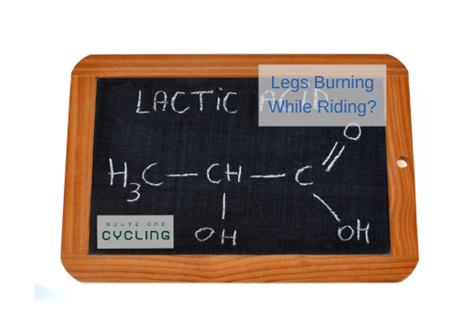How many miles cycling equals running? (The 1:3 ratio is wrong)
When I got into cycling, one of the first questions outside of if the running to cycling transition is easy that I asked my friend as a distance runner is how many miles cycling equals running? This is both a really easy question to answer and a difficult one.
The typical answer is 1:3; though you should try to get more specific than that.


In this post we will go over briefly the 1:3 rule of thumb and where it applies well. We will also go over points where it does not apply.
Why is the standard of 1:3 correct?
The standard ratio of 1 running mile to 3 biking miles is typically correct if you are riding an indoor cycle that does not move. The reason being is that all of the outside factors, including resistance are controlled by the onboard computer. These factors can be controlled so that you can remain in the 1:3 ratio without unforeseen challenges.
Why can the standard of 1:3 lead the athlete the wrong way?
There are five factors that are exogenous that a cyclist deals with that runners typically don’t. These factors will either substantially make the ride easier, or far more difficult without thinking about mileage.
What is important is to take in to affect these factors to judge your conversion. Should I be converting 1:2 or 1:4 or even 5 miles? These are the factors that will help you decide.
Factors to consider for 1:3 Ratio
- Wind Resistance at Speed: The avid cyclist when increasing their moving ground speed will face an exponential amount of wind resistance. This wind resistance will give the cyclist a far more undue amount of force that they need to generate to cover a certain distance. There is a thing as too much wind.
- Elevation Change During Ride: The overall increase and decrease of elevation will substantially change the metrics and force generated of your ride. If there are far more uphills, not only are you working harder to get uphill, but during the downhill while you are at speed and facing wind resistance – if you are pedaling – you are also generating a lot of force to maintain that speed.
- Drafting & Free Wheeling: When you are running, each and every step is the generation of energy. With cycling, you have the option of both freewheeling and drafting to retain energy. A solo ride at speed for 30 miles has the ability to wipe a rider out. On the other hand a group ride while drafting for 40 miles can leave a cyclist feeling completely fresh.
- Differing Muscle Usage: Running and cycling use a lot of the same large muscles, but many of different smaller muscles in the ankles and feet for support. Transitioning cyclists may have a more difficult time with this as these muscles for balance, agility, stability and coordination need to be developed and will affect their run and recovery times.
- Long Ride Time and Break Usage: A run for 10 miles will not have any breaks typically for an endurance runner. A cyclist will more than likely choose to take 2-3 breaks for a 30 mile ride to refuel and reload on carbohydrates. These breaks will offset the balance of a runner and a cyclist.


What is the running equivalent of biking 100 miles?
More than likely a 100 mile bike ride – typically known as a century – has the same clout as running a 26.5 mile marathon. There is the same level of preparation for the events, and it is normal for a fairly advanced cyclist to compete in this event. There is much layover between cyclist athletes who choose to compete in a 100 mile century event and a 25.6 mile marathon.


How do you convert cycling into running?
If you want to do a rough estimate of calculating cycling time to running time, then use the ratio 3 to 1. Three hours of cycling equals one hour of running. However, the more important aspect that is pretty different is first The amount of time that it takes the body to warm up by cycling vs The amount of impact that you do on your body with running.
The reason why we bring these two aspects up is to make the point that running and cycling – although they train the aerobic system heavily, are two different sports and work the body in two different ways.
First, the amount of time for the body to warm up is different between running and cycling. Running takes less that ten minutes for the body to warm up. Cycling takes 2 to 3 times that amount for the body to warm up, and then your workout can begin.
Second, Running, yes you are getting the same type of exercise as cycling, though what is different is that the over structure of your body is also strengthening. So the conversion does not take this into consideration. When cycling, the structure of the body does not need to strengthen, but the cardiovascular system will strengthen far more efficiently.
How many miles a week should I bike?
There are some cases where you can cycle too much, though it is difficult to achieve this. If you are looking to tone your muscles in a way that you are happy with what you see in the mirror, 30 minutes every other day is more than enough.
You should bike as often as you want. The reason being is that there is no upper limit on the amount that you can bike. Your body will not shut down. The only limiting factor for cycling is if you are eating enough of the correct food before and during your ride.
Can cycling replace running?
If you are strictly looking for an aerobic workout to develop your cardiovascular system, cycling can indeed replace running. If you are looking for a cardio workout that also trains and develops your balance, coordination, and fast twitch reflexes in small muscles then cycling can not replace running. They are both great to do in tandem. The main reason why many people choose to complete a full transition from running to cycling is because there is zero impact on the limbs. This means that the amount of overuse injuries from running such as tendonitis, shin splints, and different ligaments strains that are frequent in the running community are virtually zero in the cycling community.
Conclusion
There is a lot to know about running versus cycling. How many miles cycling equals running? 1:3 if you compare the correct factors – as running and cycling are two distinct athletic endeavors. If you are thinking about doing a full transition to cycling, it is important to note that some of the benefits of running such as balance and coordination may be minimized as trade that for a more effective way in working your cardiovascular system.




![Can Cycling Replace Leg Day? [Muscle Building Guide]](https://routeonecycling.com/wp-content/uploads/2023/05/Can-Cycling-Replace-Leg-Day1.png)
![How much Cycling to Burn 2000 Calories [+ Other Weight Loss Guides]](https://routeonecycling.com/wp-content/uploads/2023/05/how-much-cycling-to-burn-2000-calories1-768x548.png)

